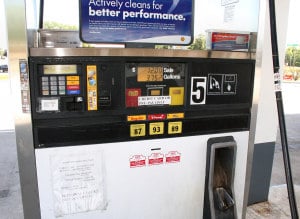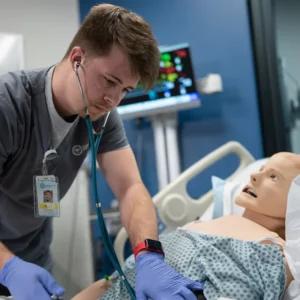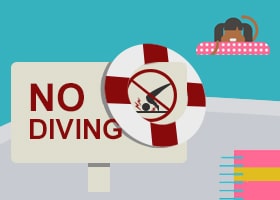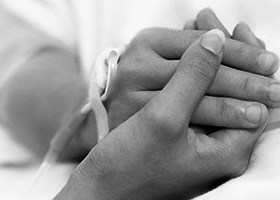 After the March 2013 scare that led news analysts to entertain the possibility of gas prices reaching $4.00/gallon nationwide, many of you may have considered the question – how can I ease the pain of filling up my car? Unfortunately, a trip to the gas station can be painful in more ways than one. While it is definitely important to avoid injuries to your wallet, it is even more important to avoid injuries to your person! The danger that a visit to the gas station poses is often overlooked, as the chances of getting in an accident are very slim. However, it is important to remember that gasoline is a highly flammable fuel, and will burn in almost any condition. Reportedly, hundreds of gas station fires involving motor vehicles occur each year, and are especially common during cold and dry weather. At Carrington, we stress the importance of safety both on and off the job, so we have provided a few safety precautions for reducing the risk of fire at the pump:
After the March 2013 scare that led news analysts to entertain the possibility of gas prices reaching $4.00/gallon nationwide, many of you may have considered the question – how can I ease the pain of filling up my car? Unfortunately, a trip to the gas station can be painful in more ways than one. While it is definitely important to avoid injuries to your wallet, it is even more important to avoid injuries to your person! The danger that a visit to the gas station poses is often overlooked, as the chances of getting in an accident are very slim. However, it is important to remember that gasoline is a highly flammable fuel, and will burn in almost any condition. Reportedly, hundreds of gas station fires involving motor vehicles occur each year, and are especially common during cold and dry weather. At Carrington, we stress the importance of safety both on and off the job, so we have provided a few safety precautions for reducing the risk of fire at the pump:
Avoid Returning to The Car While Fueling
In 2004, a hair stylist from Albany, Georgia was reported filling up her car at a gas station when her hair burst into flames. The culprit was most likely static electricity, the cause of many retail gasoline outlet flash fires. Due to the fabrics in your car and clothes, static electricity can build up from getting in and out of the vehicle and create a spark that ignites surrounding gasoline. If you value your new “do”, hair do that is, avoid getting back into your car until you are done fueling if possible. Also be sure to touch some metal before you grab hold of the pump – this will discharge any electricity you have built up.
Don’t Smoke!
For the action movie buffs out there, you may be familiar with gas station explosions due to smoking or lighters. In reality, smoking around gas pumps can still result in a fire, but the end result is not nearly as entertaining. This may seem like an obvious one, but what many people do not know is that gasoline fumes are also highly flammable, not just the liquid fuel. Lighting any sort of flame around a pump can be dangerous.
Leave Your Phone in the Car
It is theoretically possible for electronic devices to cause a fire, but it is extremely unlikely, and has actually never been determined as the cause of any past accident. That being said, some gas stations have warnings placed around gas pumps against using cell phones while pumping gas. It doesn’t hurt to be safe and leave your phone or any other electronics in the car.
Portable Fuel Containers
The American Petroleum Institute (API) has developed several safety precautions for filling up a portable fuel container. First of all, you should only use approved portable fuel containers. When you are filling up the container, set it on the ground to avoid static electricity build up. The API also recommends that you do not fill it up past 95% full to allow room for the fuel to expand.
Educate Your Children
Many experts (including the API) advise against letting children under the driving age fill up your tank at all, but if you decide to let your child operate the pump, at least educate them! If you have infants in the car, make sure that they are unrestrained – in the event that a fire breaks out, it is easier to get an unrestrained child to safety. If, despite all precautions, a flash fire does break out, what should you do? As in many emergency situations, the key is to stay calm. Do not attempt to remove the nozzle from the fill pipe in your vehicle – any gasoline that may escape can cause the fire to spread further. Emergency shut off valves can be located at gas pumps, and some gas attendants also have shut off valves inside the store, so the best course of action is to get yourself and any passengers away from the car and notify the attendant immediately. As a health care institution and a caring community, Carrington places great value on your safety, but this post was not intended to dissuade you from going to your local gas station. The chances of experiencing a gas station fire are unlikely to begin with, and by following the above precautions are slim to none. With this advice, we hope that you continue to stay as safe as possible at the gas station, on the road, and in all aspects of life! Works Cited: Staying safe at the pump. (n.d.). Retrieved from http://www.api.org/environment-health-and-safety/health-safety/product-safety-home/staying-safe-at-pump Nikkel, C. (2004, January 1). Protecting yourself while at the pump.



